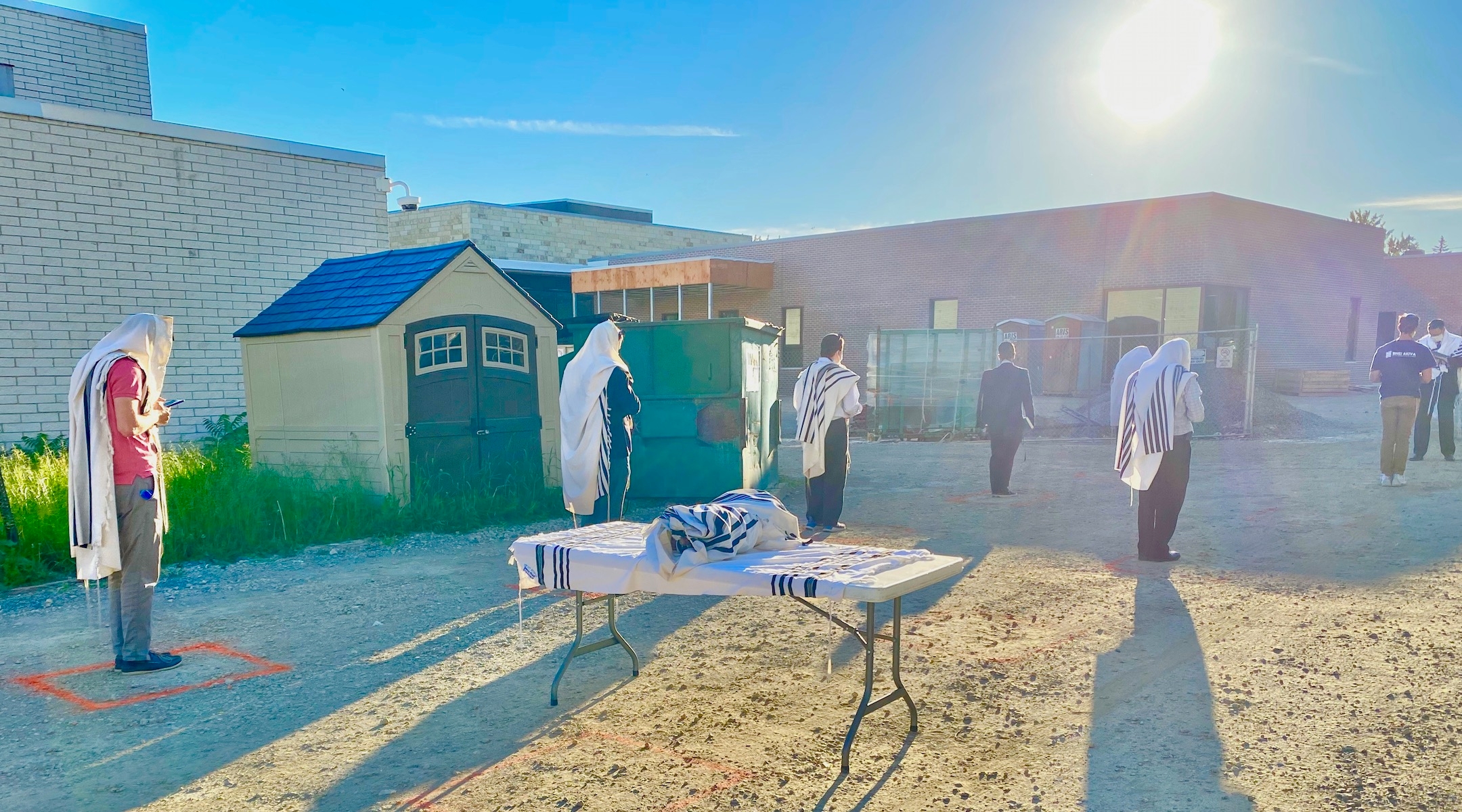“Services, But Not Shul”: How Orthodox Communities Are Preparing For A Pandemic High Holiday Season

Across the country, Orthodox communities are preparing to come together for live services during the High Holidays, even as most non-Orthodox synagogues have committed to holding services online. That’s because Orthodox Jews do not use electronics on Shabbat or holidays, leaving livestreamed options off the table.
Holding in-person services amid a pandemic means adjusting the pacing, spacing and other practices to maximize safety, and accepting the likelihood that many people will choose not to attend services at all. Even those who are optimistic about being able to safely hold services are reckoning with the fact that the most powerful days of the Jewish year will bear little resemblance to how they have been observed in the past.
In some Hasidic communities, like the Borough Park and Williamsburg neighborhoods of Brooklyn, synagogues are expected to hold in-person services as they have for months. Some synagogues have operated with few, if any, restrictions.
But most Orthodox communities, mindful of risk and, in some cases, traumatized by their own experiences — the disease spread in New York’s Orthodox communities early on — are making substantial changes. In some synagogues, the cantors will wear masks. Others will install Plexiglas barriers to keep them and any virus-laden particles they might expel through singing safely separated.
At suburban synagogues, where the space is less cramped, leaders are engaged in the complicated logistics of planning multiple services. At the Cleveland-area’s Green Road Synagogue, Rabbi Binyamin Blau said he expects to have as many as four services, some indoors and some under open tents outside. An engineer who is a synagogue member is helping Blau arrange the setup, which for the indoor services includes seating charts designed to ensure at least 6 feet of space between congregants.

“Unfortunately for three months, we had no shul at all,” said Rabbi Yaakov Robinson, who works at Beis Medrash Mikor Hachaim, an Orthodox synagogue in Chicago, where services resumed in late May. “After the difficult year we’ve had over the last four months, people want a very meaningful Rosh Hashanah and Yom Kippur.”
Robinson is not planning to cut down the service for at least a couple of reasons: He believes his congregants want the feeling of normalcy provided by the full length and he doesn’t see a health benefit.
“You’re already exposed to each other for four hours, I’m not sure 4 1/2 hours makes a difference,” he said.
Other rabbis and congregations are shortening services after being advised to limit the amount of time that people are gathering to lower the risk of spreading the coronavirus. While a typical Shabbat morning service in an Orthodox synagogue can take between two and 2 1/2 hours, morning services on Rosh Hashanah can last as long as five or six hours. That has led to some difficult choices.
Several synagogues said they would begin with shacharit rather than pesukei d’zimrah, which cuts out at least 20 minutes and does not need to be recited with a minyan.
Blau said he would not have members open and close the ark or carry the Torah around the entire sanctuary for people to kiss, both practices he’s done away with at Shabbat services since reopening. (He doesn’t mind cutting out the carrying of the Torah, which he said “takes 15 minutes and breaks up the decorum.”)
But some elements of the service would remain untouched, he said, even though they are not required for the worshippers to fulfill religious requirements.
“Unetaneh tokef is in,” Blau said, referring to the prayer that asks who will live and who will die. The prayer specifically mentions the specter of plague. “We’re not cutting that out.”
Other centerpieces of the High Holidays services are also getting a pandemic makeover.
For Yizkor, a memorial service on Yom Kippur, one is considering organizing a Zoom service before the holiday or offering a 30-minute service outdoors for those who prefer not to join for the full service but want to recite Yizkor.
For those who would rather not come to synagogue for services, many still want to hear the shofar blowing, which is considered one of the most important obligations on Rosh Hashanah. (This year, Rosh Hashanah begins on Shabbat, when Orthodox synagogues do not blow the shofar, but the shofar will be sounded on the second day and at the conclusion of Yom Kippur.)
Some synagogues are planning to offer shofar opportunities in multiple locations to reach people closer to home. The five Orthodox synagogues in the Toco Hills neighborhood of Atlanta are coordinating shofar blowing for their members together, possibly in multiple locations.
The multiple soundings of the shofar and prayer services have created a need for more prayer leaders and shofar blowers.
The Orthodox Union, an umbrella organization of Orthodox synagogues, is offering a training program to teach people who have never led a High Holiday service how to do so.
“A lot of it is focused on confidence-building,” said Yehuda Friedman, director of synagogue services for the Orthodox Union. “Because it is not easy for people to get up in front of a crowd.”
That training also could be useful for Jews who observe the High Holidays at home. And with weeks to go before the High Holidays begin and COVID-19 cases continuing to proliferate in large parts of the country, even the most carefully laid plans for live services are subject to revision.
But with memories of a solitary Passover still fresh, many Orthodox Jews say they will be happy with whatever kind of communal services they are able to safely hold.
“Even if it’s a fast davening and we’re all sitting far apart, it still feels nice seeing members of the shul I haven’t seen,” Blau said. “Once I figure out who they are because of their mask.”



